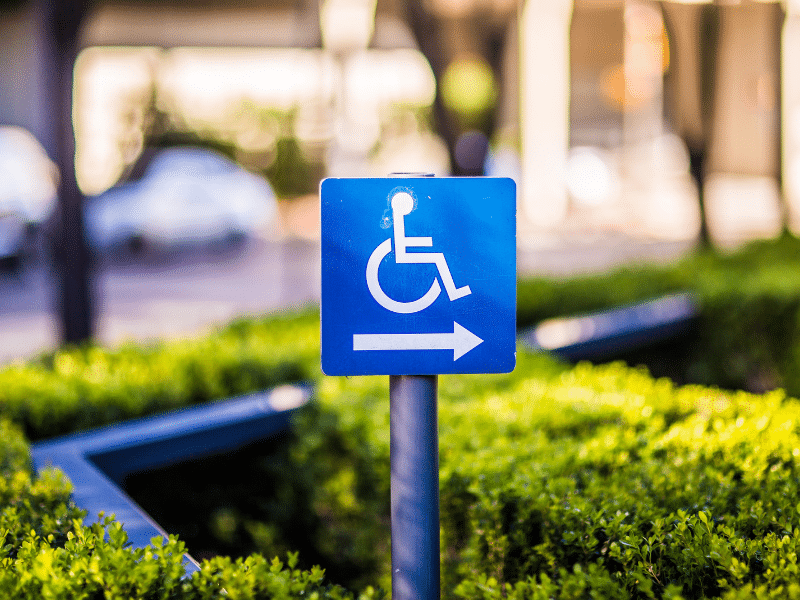Creating an inclusive and accessible environment is no longer optional for businesses—it’s a necessity. The Americans with Disabilities Act (ADA) mandates that public spaces provide accommodations for individuals with disabilities, and one of the most crucial aspects of compliance is ADA compliant signage. But beyond legal requirements, investing in proper signage can significantly enhance a business’s reputation, attract a wider customer base, and demonstrate a commitment to inclusivity.
This blog explores the impact of ADA compliant signage on a business’s accessibility and brand image, the types of signs required, and how to ensure your signage meets regulations.
What is ADA Compliant Signage?
ADA compliant signage refers to signs designed to meet specific standards outlined in the Americans with Disabilities Act (ADA). These standards ensure that signage is easily readable and usable by individuals with visual, cognitive, and mobility impairments.
Key features of compliant signage include:
Tactile text and Braille to assist visually impaired individuals.
High-contrast colors and non-glare finishes for easy readability.
Proper font style and size to enhance legibility.
Correct mounting height and location for accessibility.
Failing to meet these requirements not only excludes potential customers but can also result in legal consequences and fines.
The Business Benefits of ADA Signage
1. Improving Business Accessibility
Accessible signage plays a critical role in helping individuals with disabilities navigate spaces effortlessly. ADA wayfinding signs ensure that entrances, exits, restrooms, and other essential areas are easily identifiable.
For example, a person with visual impairments can rely on Braille signage to find meeting rooms or restrooms. Similarly, clear and visible parking and entrance signs make a location more welcoming for wheelchair users. By prioritizing accessibility, businesses open their doors to a broader customer base, including those who might otherwise feel excluded.
2. Enhancing Brand Reputation
Businesses that proactively implement ADA-compliant signage send a strong message about their values. Demonstrating a commitment to inclusivity builds trust with customers and enhances the company’s reputation. Consumers are more likely to support businesses that make a conscious effort to accommodate all individuals, regardless of ability.
Consider a retail store with well-placed, easy-to-read directional signage versus one without any accessible wayfinding solutions. Customers, especially those with disabilities, will appreciate the effort taken to create a more navigable and welcoming environment. Positive experiences lead to better reviews, repeat visits, and strong word-of-mouth recommendations.
3. Avoiding Legal Risks and Penalties
Failing to comply with ADA sign requirements can have serious legal repercussions. The ADA is a federally mandated law, and non-compliance can result in lawsuits, fines, and potential loss of business licenses. In addition, businesses found in violation of ADA regulations may be required to make costly retroactive modifications.
Investing in proper signage from the beginning ensures businesses stay on the right side of the law while fostering an inclusive space for all customers.
Types of ADA Compliant Signage Businesses Need
Depending on the type of business and facility, different forms of ADA signage are required. Some of the most common include:
ADA restroom signs – Clearly marked restrooms with tactile lettering and Braille.
Exit and wayfinding signage – Helps guide customers and employees through the space.
Room identification signs – Labels offices, conference rooms, and other areas.
Parking and handicap signs – Designates accessible parking spots for individuals with disabilities.
Each type of signage serves a unique purpose in ensuring accessibility and compliance.
How to Ensure Your Business Has Proper ADA Signage
1. Custom vs. Stock ADA Signs
While generic, off-the-shelf ADA signs are available, they may not always align with a business’s branding. Custom ADA signs offer the benefit of compliance while maintaining a professional, branded aesthetic. Businesses can choose colors, materials, and styles that align with their décor while still adhering to ADA guidelines.
2. ADA Signage Placement Best Practices
It’s not just about having the right signage—it must also be placed correctly. Signs should be mounted at an appropriate height (typically 48 to 60 inches from the ground) and positioned near doorways, elevators, and stairwells. Additionally, tactile signs should not be obstructed by objects, ensuring they are accessible to all users.
3. Working with a Professional Signage Company
Navigating the complexities of ADA sign compliance can be challenging, which is why partnering with a professional signage provider is a smart choice. Experts ensure that businesses meet all regulatory requirements while providing aesthetically pleasing, durable solutions tailored to specific needs.
Investing in ADA Compliant Signage for Long-Term Success
Incorporating ADA compliant signage into a business isn’t just about following the law—it’s about fostering inclusivity, enhancing customer experiences, and building a reputable brand. Proper signage improves accessibility, strengthens brand trust, and helps businesses avoid costly legal issues.
If your business needs high-quality, fully compliant ADA signage, Archer Signs is here to help. Our expert team specializes in creating custom ADA signs that meet regulations while complementing your brand’s aesthetics. Contact us today to discuss your signage needs and ensure your business is welcoming to all!
